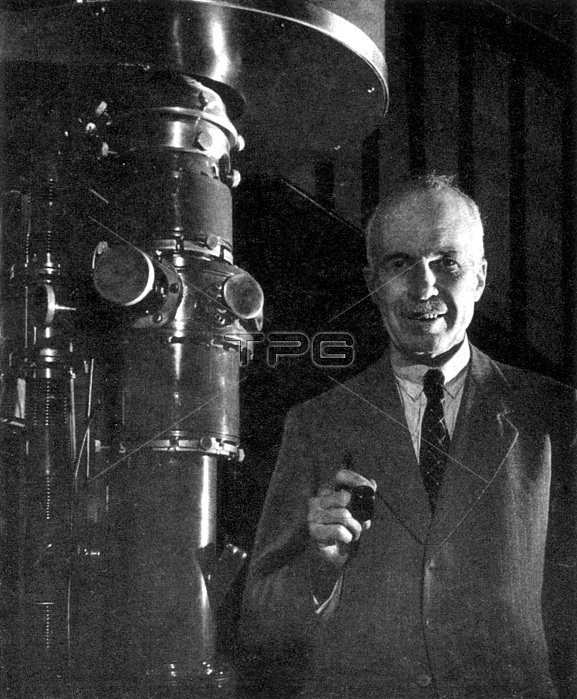
Bragg beside a Lend-Lease electron microscope, September 20, 1942. William Lawrence Bragg (March 31, 1890 - July 1, 1971) was an Australian-born British physicist and X-ray crystallographer. He was joint winner (with his father, William Henry Bragg) of the Nobel Prize in Physics in 1915: "For their services in the analysis of crystal structure by means of X-ray". His research work was interrupted by both WWI and WWII. During both wars he worked on sound ranging methods for locating enemy guns. Between the wars, from 1919-37, he worked at the Victoria University of Manchester as Langworthy Professor of Physics. In 1948 he became interested in the structure of proteins and was partly responsible for creating a group that used physics to solve biological problems. He played a part in the 1953 discovery of the structure of DNA, in that he provided support to Crick and Watson who worked under his aegis at the Cavendish. He was gratified to see that the X-ray method that he developed40 years before was at the heart of this profound insight to the nature of life itself. He died in 1971 at the age of 81. As of 2014, Lawrence Bragg is the youngest ever Nobel Laureate in physics, having received the award at the age of 25. No photographer credited.
| px | px | dpi | = | cm | x | cm | = | MB |
Details
Creative#:
TOP22171024
Source:
達志影像
Authorization Type:
RM
Release Information:
須由TPG 完整授權
Model Release:
No
Property Release:
No
Right to Privacy:
No
Same folder images:

 Loading
Loading